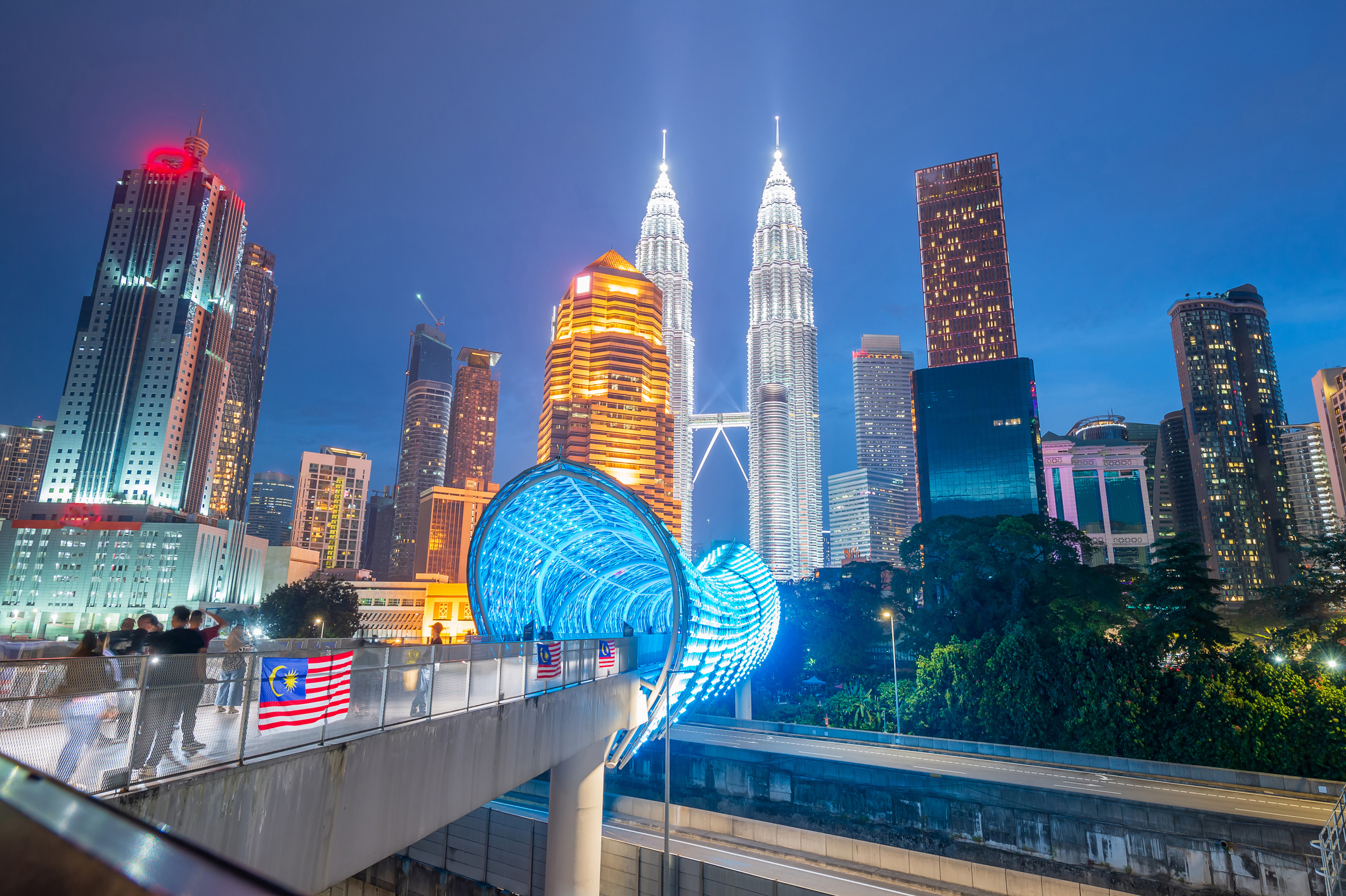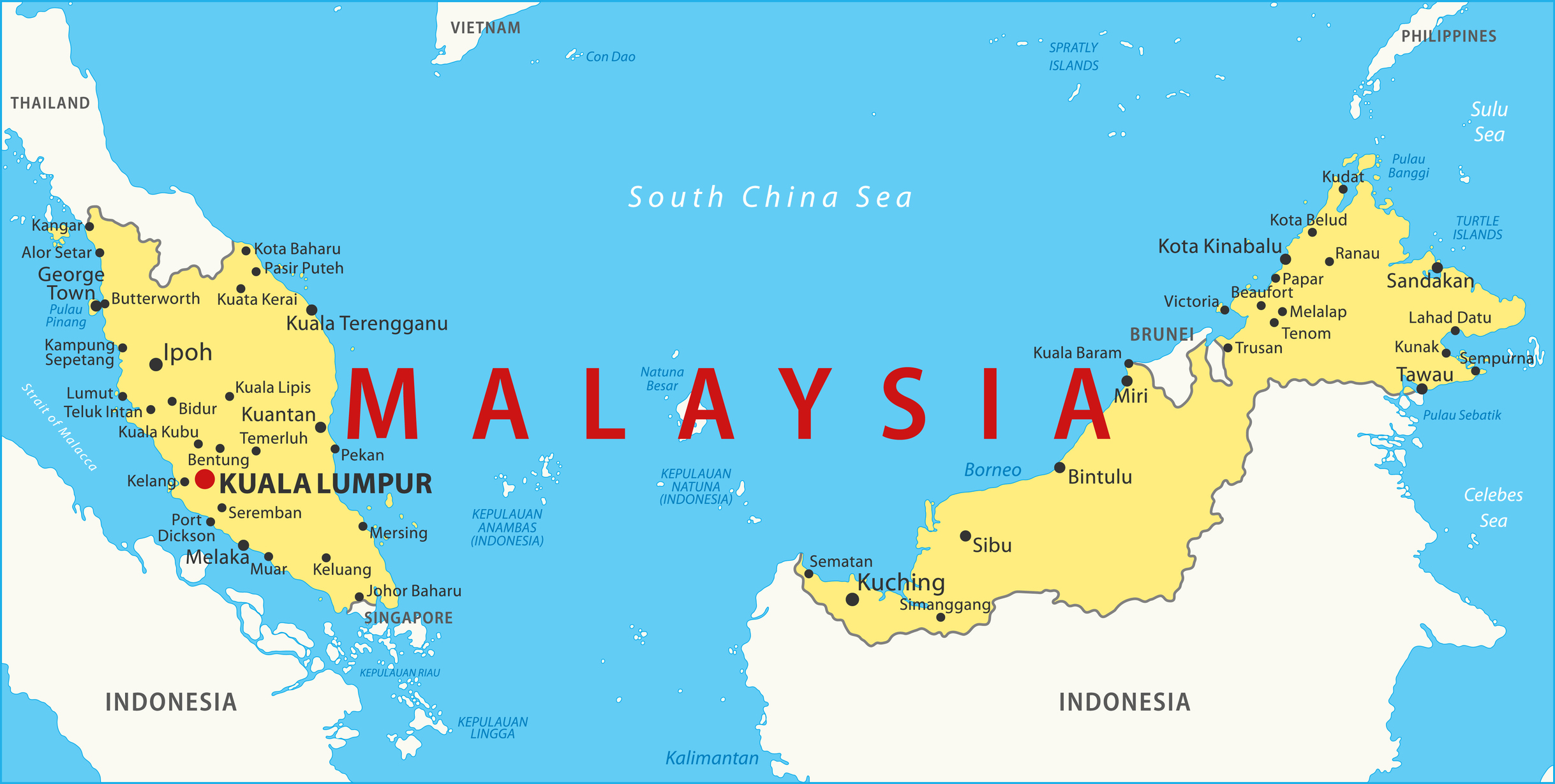
Editor’s note: "Retire in Malaysia" is part of an ongoing series on retiring abroad. To see all the articles in the series, jump to the end.
Malaysia, which occupies parts of the Malay Peninsula and the island of Borneo, is an exceptional retirement destination, according to Jean-Francois Harvey, a foreign-registered lawyer who is the founder and managing partner of Harvey Law Group. “The country offers a cost of living approximately 51.56% lower than in the U.S.,” he says, “enabling retirees to enjoy a high quality of life on a modest budget — $1,500 per month for a single retiree. Its tropical climate, breathtaking landscapes — from Penang’s beaches to Sabah’s jungles — create a vibrant lifestyle.”
Malaysia’s upper-middle-income economy is growing and diversifying at a fast clip, with a GDP surpassing that of Denmark. English is widely spoken, and the country’s modern infrastructure, including world-class health care, leads to fairly seamless integration — for those who favor a tropical climate. There’s little temperature variation throughout the year, and rain showers are frequent. The dry and wet seasons depend on your location, but the capital, Kuala Lumpur, is driest from May to September. “Thriving expat communities, alongside low crime rates and political stability, foster a safe, welcoming environment,” Harvey says.
In addition, Malaysia’s enviable geographic position means that you can access Singapore by car, fly to Bangkok in a little over two hours, and get to Bali in a bit more than three.
Retire in Malaysia: where to land

Harvey is quick to narrow down his top three places to live: Kuala Lumpur, Penang, and Johor Bahru. “Each offers vibrant communities and modern amenities for retirees,” he says. Kuala Lumpur is the capital city, a federal territory, and a brand in itself, known the world over by its initials, KL. The largest city in the country, with technically more than two million people, KL is thought of as being far bigger, due to its wider, sprawling metro population of 8.8 million.
“Kuala Lumpur has urban conveniences, world-class hospitals like Gleneagles, and a diverse expat community,” Harvey says. The city also echoes the glitz of other highly developed Asian cities, such as Shanghai and Hong Kong, because of its famed skyline. Tube-like and tapered and connected by a skybridge, the famed Petronas Twin Towers, designed by the acclaimed Argentine architect César Pelli, managed to hold onto their title as the world’s tallest skyscrapers for an impressive eight years (1996 to 2004), no small feat during the golden age of skyscraper development in Asia. (Their successor, Taipei 101, held the No. 1 spot for a mere five years.)
At its base, the 50-acre KLCC Park offers walking and jogging paths, and even a wading pool, so it’s cool to run laps below the world’s tallest dual towers.
The Kuala Lumpur Tower, another supertall building, is reminiscent of Shanghai’s Oriental Pearl Tower. The city’s Merdeka 118 building is the tallest skyscraper in Malaysia and Southeast Asia, ranking as the second-tallest building in the world, behind Dubai’s Burj Khalifa.
Life below the skyline earns top marks. The Economist Intelligence Unit ranked KL as second only to Singapore in terms of livability among cities in Southeast Asia. The high score is attributed to such factors as the city’s superior infrastructure, culture, and health care. Its museums, theaters, sports stadiums, and recreational spaces all contribute to making KL a world-class city, in addition to its culinary scene, which is heavily represented by Chinese, Indian, and Malay cuisine — though Marini’s on 57 is acclaimed for its Italian fare and sleek rooftop bar. You can get quality food of every ethnicity in such a large and sophisticated city, from Greek meze to American-style burgers.
Renting an apartment is not expensive, even in the city center, where you can snag a furnished one- or two-bedroom for under $1,000 a month. One Malaysian Ringgit (MYR) equates to approximately 25 cents.
Harvey notes that Penang, the “Pearl of the Orient,” a highly urbanized state (the capital is George Town), is renowned for its affordable living and quality health care via public and private hospitals. Penang is known for its cultural festivals and celebrations — even imported holidays like St. Patrick's Day and Oktoberfest.
Island getaways are plentiful. For example, the Four Seasons brand found Langkawi gorgeous enough to stick a top-rated resort there in 2005. Idyllic Tioman, Perhentian, and Redang are also worth visiting.
Visa and money matters

“The Malaysia My Second Home (MM2H) visa is highly appealing for American retirees due to its flexibility and long-term residency options,” Harvey advises.
This renewable visa permits indefinite stays in Malaysia and exempts foreign-sourced income, like pensions, from local taxes. Coupled with Malaysia’s low cost of living, MM2H provides a financially attractive retirement option. “However,” Harvey notes, “its suitability hinges on financial resources, as requirements include substantial fixed deposits and property investments,” which may not be feasible for lower-income retirees. “But for affluent retirees seeking stability and a high-quality lifestyle,” Harvey says, “MM2H is a compelling choice, though individual circumstances should guide the decision.”
“The MM2H program enhances its appeal with a renewable 5- to 20-year visa, tax-exempt offshore income, and property ownership opportunities,” Harvey says. The five-year Silver tier visa requires a property investment of $140,000, plus a fixed deposit of $150,000; the 15-year Gold tier visa requires a property investment of $235,000, plus a fixed deposit of $500,000; and the Platinum visa (20 years) calls for a $470,000 property investment and a $1 million fixed deposit. The MM2H visa approval typically takes 2 to 4 months, depending on the completeness of the application and processing times.
Expats can obtain private health care insurance for under $50 a month, the same private plan available to Malaysian nationals. The nation’s increased reputation for medical tourism means that providers typically speak English, and wait times are short.
Living in Malaysia: The takeaway
Retirees drawn to dynamic Asian cities with Western creature comforts and access to scenic beaches and other desirable destinations — from Vietnam and Cambodia to Indonesia and Thailand — should seriously consider Malaysia, especially Kuala Lumpur.
The country’s low cost of living and affordable, highly rated private health care system are deal sweeteners that largely offset the high price of entry exemplified by visa costs beyond the Silver tier.
More on where to retire abroad
- Retire in Japan: It Ain’t Easy, Unless You’re Special
- Retire in Finland and Live the Nordic Dream
- Retire in Malta for Quiet Coastal Perfection
- Retire in New Zealand for Lush Landscapes and a Relaxed Vibe
- Retire in Italy for Culture and Beauty
- Retire in Greece for Relaxed Living With a Cinematic Backdrop
- Retire in Thailand Where 'The White Lotus' Was Filmed
- Retire in Mexico: Get a Lower Cost of Living Near the US
- Where to Retire: Living in Portugal as a US Retiree
- Where to Retire: Living in the Dominican Republic
- Where to Retire: Living in Panama Offers Stability and Charm
- Where to Retire: Living in Brazil Is More Than Carnival, Coffee and Copacabana
- Where to Retire 2025: Puerto Rico







